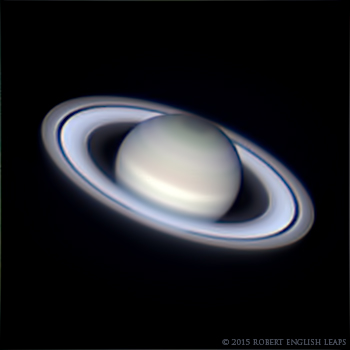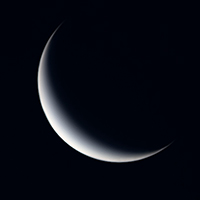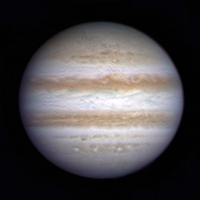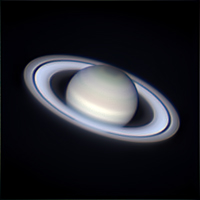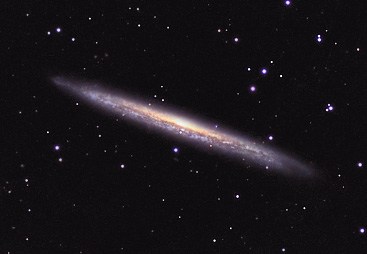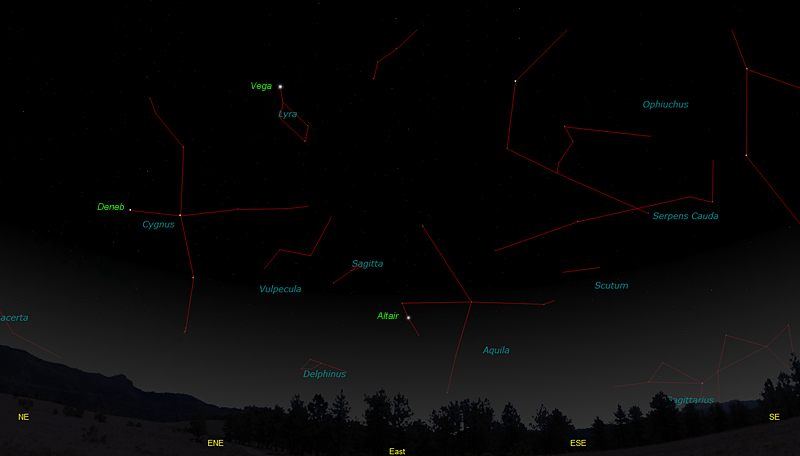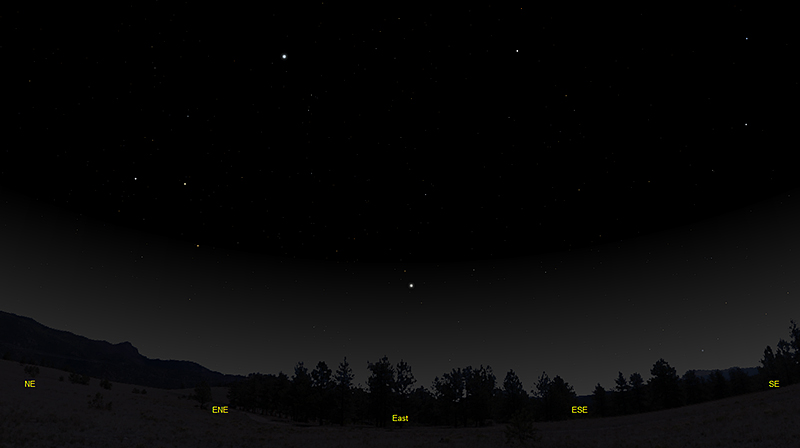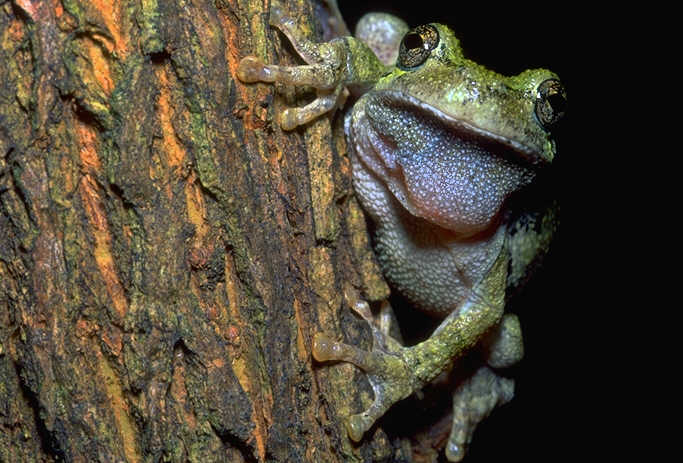The purpose of this feature is to give scout leaders, educators and naturalists an idea of some of the natural events coming up each month. We will try to cover a variety of natural events ranging from sky events to calling periods of amphibians, bird and mammal watching tips, prominent wildflowers and anything else that comes to mind. We will also note prominent constellations appearing over the eastern horizon at mid-evening each month for our area for those who would like to learn the constellations. If you have suggestions for other types of natural information you would like to see added to this calendar, let us know! Note: You can click on the hyperlinks to learn more about some of the featured items. To return to the Calendar, hit the "back" button on your browser, NOT the "back" button on the web page. All charts are available in a "printer friendly" mode, with black stars on a white background. Left clicking on each chart will take you to a printable black and white image. Please note that images on these pages are meant to be displayed at 100%. If your browser zooms into a higher magnification than that, the images may lose quality. Though we link book references to nationwide sources, we encourage you to support your local book store whenever possible.
Notes and Images From May 2015
A large high pressure system moved over the state in the first week in May, and it allowed us to set up the 20 inch Newtonian telescope for planetary imaging. It was a beautiful afternoon when I was putting the scope together on May 2nd. A Prairie Warbler flew up to the top of the cedar just north of the observatory and sang. I spotted a small movement along the wall of the observatory and found it to be a female Tan Jumping Spider, Platycryptus undatus. This was the first of this species that we've seen at our farm. This one was hunting, and it soon caught a small plant bug (genus Dichrooscytus) that I had photographed earlier. I noticed many ants making their way past the spider with no apparent fear, and it did not seem to be interested in them as prey. The spider seemed fairly large for this early in the season, and on checking I found that this species sometimes overwinters. As many as fifty of these spiders have been observed hibernating en masse beneath the bark of trees like the Shagbark Hickory. The scaly bark of the Shagbark Hickory also provides protection from the winter cold for some treefrogs and bats.
I planned on imaging both Jupiter and Saturn. These two gas giants make up over ninety percent of all of the planetary mass in the solar system. My first target was Saturn, which would not reach its highest point in the sky until the early morning hours of the following day. At the present time Saturn doesn't climb very high in the southern sky, and it's important to image it at its maximum altitude. I set the alarm clock for 1:00am, and when I made my way out to the telescope I was surprised to find the atmosphere fairly steady. A nice chorus of frogs drifted up from the pond. In the above image, the darkest feature in the ring system is Cassini's Division, discovered by Giovanni Cassini in 1675. You can see the globe of Saturn through the division. The translucent innermost Ring C was discovered in 1850 by William C. Bond. It is also known as the "crepe" ring, after the translucent black silk that was used in mourning clothes in the 19th century.
The atmosphere was pretty unsteady for the next few nights, but on May 8th conditions improved. This time I imaged Jupiter. I started imaging in the twilight sky, and after a short time the seeing deteriorated. But I was able to get enough data to make the image at right. Sometimes I think about Galileo when I look at Jupiter and Saturn. The discovery of the four brightest moons of Jupiter was one of Galileo's biggest triumphs. Saturn frustrated him. When he first observed Saturn through his telescope the rings appeared partially open, similar to the image of Saturn above. His telescope was not good enough to allow him to see the rings completely encircling the planet. Through his telescope Saturn looked like a large globe with a smaller globe on each side. As Saturn orbits the Sun, the rings appear to slowly open and close in a 29 year cycle. When Galileo returned to Saturn a few years later, the rings were "edge on" and invisible. His two smaller globes had disappeared! In a letter he wrote; "What can be said about so strange a metamorphosis? Are perhaps the two smaller stars consumed, like the spots on the Sun? Have they suddenly vanished and fled? Or has Saturn devoured his own children?...I cannot resolve what to say in a chance so strange, so new, and so unexpected; the shortness of time, the unexampled occurrence, the weakness of my intellect and the terror of being mistaken, have greatly confounded me." He never solved the puzzle. His telescope simply did not have enough resolution to make out the rings in all their glory. Almost any small telescope you can buy today will give a view of Saturn that would have answered Galileo's questions. I think of him sometimes when I'm looking at the rings. Just for a moment I imagine him standing beside me. Here they are, I say, look here.
Sky Events for June 2015: The Sun reaches the June solstice at 11:38pm CDT on June 21st. This marks the beginning of summer in the Northern Hemisphere. Evening Sky:
Venus reaches greatest elongation from the Sun on June 6th. Look for it above the western horizon starting about 30 minutes after sunset. Jupiter moves through Cancer into Leo this month. Look for it in the early evening in the western sky, above and to the left of Venus as the month begins. Jupiter and Venus put on a spectacular show this month. The apparent distance between the two planets, both bright beacons in the western sky, diminishes as the month goes on, and the two will form a striking pair in the twilight sky towards the end of June. They are closest on June 30th, when the angular separation between the two is less than a third of a degree. This amount of separation should allow both planets to be viewed in the same eyepiece field of view. Though Jupiter is much larger than Venus, it's much farther away, so the planets will appear about the same size. Venus will show a crescent phase. It should be quite a visual treat, and quite beautiful in binoculars. Try to get binocular or telescopic views just as soon as you can spot Venus in the twilight sky. A brighter background sky really helps, particularly with Venus.
Saturn rises about a little after 6:55pm CDT at the beginning of the month in Libra. Look for it low in the southeast. Saturn's rings have opened up to more than 24 degrees tilt, giving a wonderful view of the ring system through just about any aperture telescope. Saturn transits around 11:03pm CDT at mid-month, and you will get your best telescopic view around that time. Morning Sky: Look for Mercury low in the morning twilight at month's end, about 6 degrees above the eastern horizon. Begin looking about 45 minutes before sunrise. All times noted in the Sky Events are for Franklin, Tennessee and are in Central Daylight Time. These times should be pretty close anywhere in the mid-state area.
Constellations: The views below show the sky looking east at 10:00pm CDT on June 15th. The first view shows the sky with the constellation outlined and names depicted. Star and planet names are in green. Constellation names are in blue. The second view shows the same scene without labels. Lyra, the Lyre, with its bright star Vega, is higher above the horizon this month, and is joined by Cygnus, the Swan, and Aquila, the Eagle. The bright stars Vega, Deneb and Altair form the "summer triangle." Looking to the north, the edge-on galaxy NGC 5907 rides high above the Little Dipper in Draco. This galaxy was discovered in 1788 by William Herschel. Most estimates place it at a distance of around 40 million light-years. Using averted vision, I've seen it as a faint narrow streak of light in my 85mm Televue refractor. A 6 inch telescope will give you a better view. As with all deep sky objects, you need a clear dark sky.
On Learning the Constellations: We advise learning a few constellations each month, and then following them through the seasons. Once you associate a particular constellation coming over the eastern horizon at a certain time of year, you may start thinking about it like an old friend, looking forward to its arrival each season. The stars in the evening scene above, for instance, will always be in the same place relative to the horizon at the same time and date each June. Of course, the planets do move slowly through the constellations, but with practice you will learn to identify them from their appearance. In particular, learn the brightest stars (like Altair and Vega in the above scene looking east), for they will guide you to the fainter stars. Once you can locate the more prominent constellations, you can "branch out" to other constellations around them. It may take you a little while to get a sense of scale, to translate what you see on the computer screen or what you see on the page of a book to what you see in the sky. Look for patterns, like the stars that make up the constellation Lyra. The earth's rotation causes the constellations to appear to move across the sky just as the sun and the moon appear to do. If you go outside earlier than the time shown on the charts, the constellations will be lower to the eastern horizon. If you observe later, they will have climbed higher. As each season progresses, the Earth's motion around the Sun causes the constellations to appear a little farther towards the west each night for any given time of night. If you want to see where the constellations in the above figures will be on July 15th at 10:00pm CDT, you can stay up till 12:00am CDT on June 15th and get a preview. The westward motion of the constellations is equivalent to two hours per month. Recommended: Sky & Telescope's Pocket Star Atlas is beautiful, compact star atlas. A good book to learn the constellations is Patterns in the Sky, by Hewitt-White. You may also want to check out at H. A. Rey's classic, The Stars, A New Way to See Them. For skywatching tips, an inexpensive good guide is Secrets of Stargazing, by Becky Ramotowski. A good general reference book on astronomy is the Peterson
Field Guide,
A Field Guide to the Stars and Planets, by Pasachoff. The book retails for around $14.00. Starry Night has several software programs for learning the night sky. Visit the Starry Night web site at www.starrynight.com for details. The Virtual Moon Atlas is a terrific way to learn the surface features of the Moon. And it's free software. You can download the Virtual Moon Atlas here. Cartes du Ciel is a great program for finding your way around the sky. It is also free, and can be downloaded here. Apps: We really love the Sky Safari Pro application described here. For upcoming events, the Sky Week application is quite nice. Both apps are available for both I-phone and Android operating systems. The newest version, Sky Safari 4, is available from Play Store or from i-tunes. The makers of Sky Safari 4 have a free app called Pluto Safari. You can get the latest info and run simulations for the New Horizons mission to Pluto with this app, and get the latest news and images from the mission. It's available for both iOS and android operating systems. With the closest approach to Pluto coming up on July 14th, it should be very useful.
Amphibians:
In June the treefrogs really hit their stride. Listen for Cope's Gray Treefrogs, Gray Treefrogs, Bird-Voiced Treefrogs, Green Treefrogs and Barking Treefrogs. Eastern Cricket Frogs and Southern Cricket Frogs call a lot during June, and the calls of Bullfrogs, Green Frogs and Fowler's Toads fill the night air. After heavy rains listen for the high, insect-like call of the Eastern Narrowmouth Toad and the strange-sounding Eastern Spadefoot. Recommended: The Frogs and Toads of North America, Lang Elliott, Houghton Mifflin Co. Birds: Now is a good time to get to know the breeding birds of Tennessee. It's fun to take a trip to the Great Smoky Mountains National Park in June and hike a high altitude trail, like the Alum Cave Bluff trail. By doing so you can encounter birds that breed in Tennessee at these higher elevations, like Black-throated Blue Warblers, Canada Warblers, Chestnut-sided Warblers and Blackburnian Warblers. Recommended: The Sibley Guide to Birds, David Allen Sibley The Sibley Guide to Birds of Eastern North America, David Allen Sibley An inexpensive guide for beginners is the Golden Guide for Birds.
Archives (Remember to use the back button on your browser, NOT the back button on the web page!) Natural Calendar February 2015 Natural Calendar December 2014 Natural Calendar November 2014 Natural Calendar September 2014 Natural Calendar February 2014 Natural Calendar December 2013 Natural Calendar November 2013 Natural Calendar September 2013 Natural Calendar December 2012 Natural Calendar November 2012 Natural Calendar September 2012 Natural Calendar February 2012 Natural Calendar December 2011 Natural Calendar November 2011 Natural Calendar September 2011 Natural Calendar February 2011 Natural Calendar December 2010 Natural Calendar November 2010 Natural Calendar September 2010 Natural Calendar February 2010 Natural Calendar December 2009 Natural Calendar November 2009 Natural Calendar September 2009 Natural Calendar February 2009 Natural Calendar December 2008 Natural Calendar November 2008 Natural Calendar September 2008 Natural Calendar February 2008 Natural Calendar December 2007 Natural Calendar November 2007 Natural Calendar September 2007 Natural Calendar February 2007 Natural Calendar December 2006 Natural Calendar November 2006 Natural Calendar September 2006 Natural Calendar February 2006
Natural Calendar December 2005
Natural Calendar November 2005
Natural Calendar September 2005
Natural Calendar February 2005
Natural Calendar December 2004
Natural Calendar November 2004
Natural Calendar September 2004
Natural Calendar February 2004
Natural Calendar December 2003
Natural Calendar November 2003
Natural Calendar September 2003 Natural Calendar February 2003 Natural Calendar December 2002 Natural Calendar November 2002 Nature Notes Archives: Nature Notes was a page we published in 2001 and 2002 containing our observations about everything from the northern lights display of November 2001 to frog and salamander egg masses. Night scenes prepared with The Sky Professional from Software Bisque All images and recordings © 2015 Leaps
|

